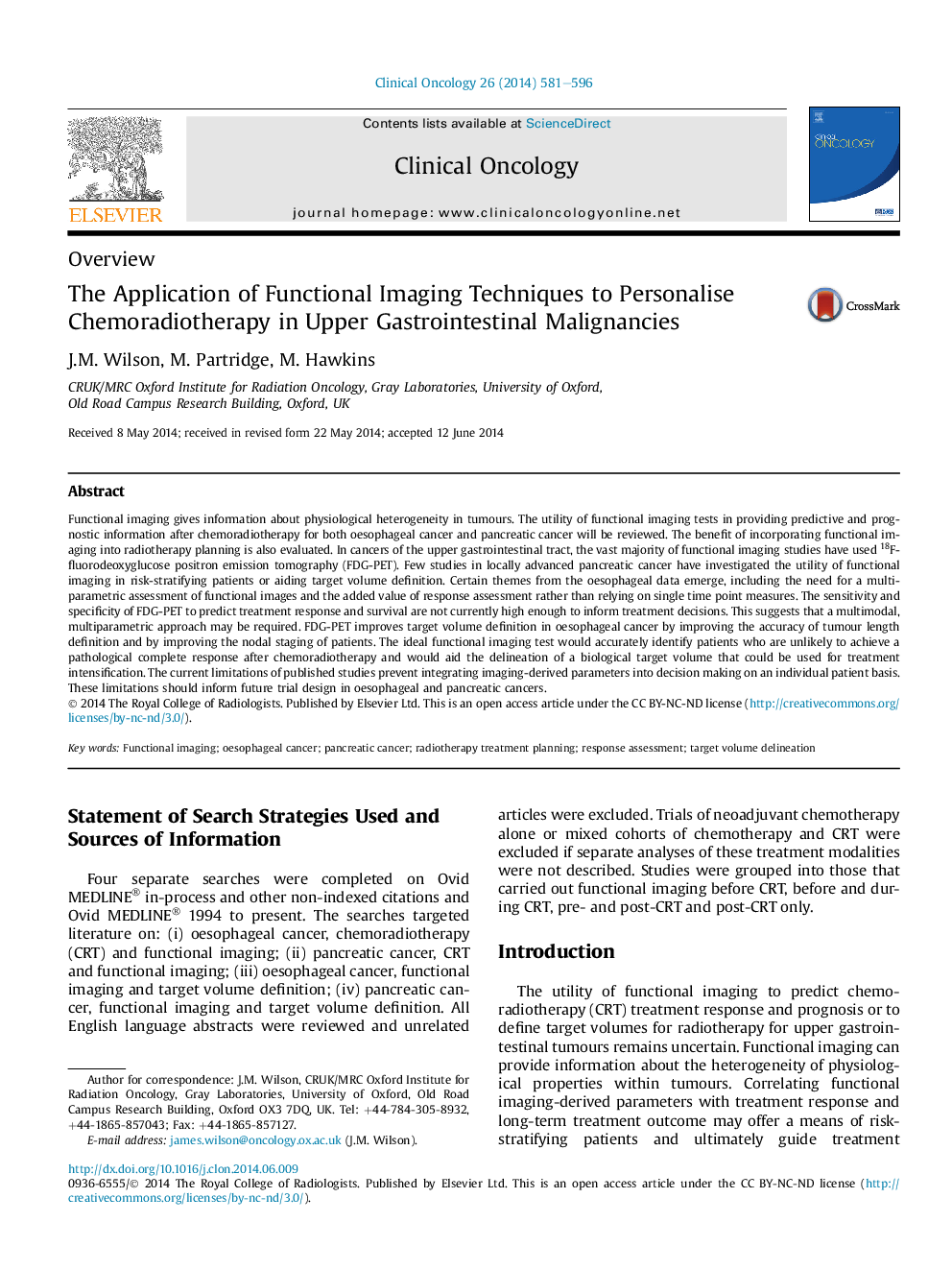| Article ID | Journal | Published Year | Pages | File Type |
|---|---|---|---|---|
| 5698556 | Clinical Oncology | 2014 | 16 Pages |
Abstract
Functional imaging gives information about physiological heterogeneity in tumours. The utility of functional imaging tests in providing predictive and prognostic information after chemoradiotherapy for both oesophageal cancer and pancreatic cancer will be reviewed. The benefit of incorporating functional imaging into radiotherapy planning is also evaluated. In cancers of the upper gastrointestinal tract, the vast majority of functional imaging studies have used 18F-fluorodeoxyglucose positron emission tomography (FDG-PET). Few studies in locally advanced pancreatic cancer have investigated the utility of functional imaging in risk-stratifying patients or aiding target volume definition. Certain themes from the oesophageal data emerge, including the need for a multiparametric assessment of functional images and the added value of response assessment rather than relying on single time point measures. The sensitivity and specificity of FDG-PET to predict treatment response and survival are not currently high enough to inform treatment decisions. This suggests that a multimodal, multiparametric approach may be required. FDG-PET improves target volume definition in oesophageal cancer by improving the accuracy of tumour length definition and by improving the nodal staging of patients. The ideal functional imaging test would accurately identify patients who are unlikely to achieve a pathological complete response after chemoradiotherapy and would aid the delineation of a biological target volume that could be used for treatment intensification. The current limitations of published studies prevent integrating imaging-derived parameters into decision making on an individual patient basis. These limitations should inform future trial design in oesophageal and pancreatic cancers.
Keywords
Related Topics
Health Sciences
Medicine and Dentistry
Oncology
Authors
J.M. Wilson, M. Partridge, M. Hawkins,
